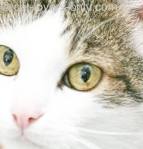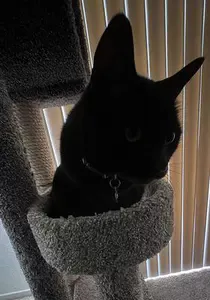Understanding Cat Food Ingredients
Understanding cat food ingredients can be a challenge. Here's some help sorting out pet food labels so that you can compare ingredients in various cat foods, and know some of the things to avoid.
One of the biggest points of confusion over the ingredient list comes when trying to decipher the terminology. Terms that may be confusing include the use of the words by-products, meal (as in turkey or chicken meal), and gluten.
Some of the chemical names may be confusing as well, but many of these are vitamin supplements added to the food to meet nutritional requirements. Some, however, like ethoxyquin, may be chemical preservatives, and should be avoided.
Ingredients List On Cat Food Labels

In order to better understand the significance of certain cat food ingredients, let's get a better understanding of cat food labels.
Cat food labels can be quite confusing, especially when trying to compare ingredients across types (wet vs. dry) or brands of cat food. The labels, especially with respect to the product names, are very much a marketing tool.
When choosing a cat food, try to avoid the following ingredients:
By-products, BHA, BHT, and ethoxyquin. Some cat health experts may also recommend avoiding any cat foods with the term "meal" on the label.
The highest standards will probably be in organic cat food, or some of the higher end "natural" lines.
Meal - Meal refers to a dry concentrated protein-rich powder containing little water and no fat. The term meal is confusing in that some premium cat food manufacturers use it, even though others will state that it may be inferior quality.
Per the FDA website, "Meat meal is not meat per se, since most of the fat and water have been removed by rendering." You may read that meal can be an inconsistent form of nutrition. This depends upon what was used to create the meal.
Some high quality brands of cat food contain meal, so you'll have to make your own decision as to whether or not it's all right for your cat.
By-products - Some manufacturers claim that they use no by-products. The by-product confusion comes in when defining what by-products are. What are by-products?
According to Wendell O. Belfield, DVM, there are three basic groups of by-products. Inedible, human inedible, and edible.
He says that inedible by-products offer no nutrition and are not incorporated into most pet foods. Edible by-products include things like liver and kidneys, and are OK for consumption. Items that are considered inedible for humans are OK as long as they come from healthy animals. Read more about what Dr. Belfield says about by-products.
Flavor - Just because a label says it has no artificial flavors, that doesn't necessarily mean that the flavoring agents are of premium quality.
When a cat food says it has "Beef Flavor" on the label, for example, it may not contain actual whole beef at all. Beef meal or by-products may be used to create the flavor.
Some companies may use animal digests for flavoring. Per the FDA website, animal digests "are materials treated with heat, enzymes and/or acids to form concentrated natural flavors." So, "Turkey Flavored Cat Food" may have only a tiny amount of "turkey digest" and no real turkey at all.
Gluten - Gluten is a protein derived from grain, and may be used as a thickening agent (think "gravy" in cat and dog food). There's been a lot of talk about allergic reactions in cats (and humans) to grains, and "gluten free" people diets abound.
Some have disputed the allergy or reaction to grains or gluten as being unproven. What we do know, however, is that the cat food recall of 2007 involved contaminated gluten. Melamine was added to the gluten to make it appear as though it had a higher protein content.
A true grain-free cat food would not have gluten.
Artificial preservatives - BHA, BHT, and ethoxyquin are commonly used preservatives. They should be avoided if possible. Most cat foods that are marketed as being "natural" or "organic" should not have these. Instead, they typically use vitamin E and C.
It's worth noting, however, that some terms can be confusing. For instance, the term "natural" doesn't have the meaning you think it should.
Similarly, "certified organic" and "organic" are not the same thing. Unfortunately, many of these terms are largely marketing speak rather than something you can consistently rely on.


Comments: What do you think?
Have your say about what you just read. Leave me a comment in the box below.